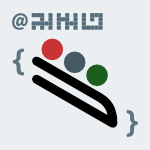38 papers:
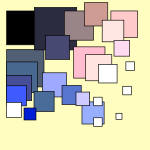 SCAM-2015-FenskeSMS #detection #smell #variability
SCAM-2015-FenskeSMS #detection #smell #variability- When code smells twice as much: Metric-based detection of variability-aware code smells (WF, SS, DM, GS), pp. 171–180.
 ICALP-v2-2015-Klein0 #game studies #how #infinity #lookahead #question
ICALP-v2-2015-Klein0 #game studies #how #infinity #lookahead #question- How Much Lookahead is Needed to Win Infinite Games? (FK, MZ), pp. 452–463.
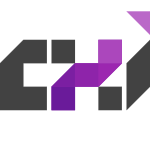 CHI-2015-DeberJFW #how #latency #performance
CHI-2015-DeberJFW #how #latency #performance- How Much Faster is Fast Enough?: User Perception of Latency & Latency Improvements in Direct and Indirect Touch (JD, RJ, CF, DW), pp. 1827–1836.
 CHI-2015-StraitVFSU #elicitation #interactive
CHI-2015-StraitVFSU #elicitation #interactive- Too Much Humanness for Human-Robot Interaction: Exposure to Highly Humanlike Robots Elicits Aversive Responding in Observers (MS, LV, VF, MS, HLU), pp. 3593–3602.
 SAC-2015-HoldererAM #bibliography #constraints #workflow
SAC-2015-HoldererAM #bibliography #constraints #workflow- When four-eyes become too much: a survey on the interplay of authorization constraints and workflow resilience (JH, RA, GM), pp. 1245–1248.
 ICSE-v1-2015-WatermanNA #agile #architecture #how
ICSE-v1-2015-WatermanNA #agile #architecture #how- How Much Up-Front? A Grounded theory of Agile Architecture (MW, JN, GA), pp. 347–357.
 ICSE-v2-2015-BellerGZ #developer #how #question
ICSE-v2-2015-BellerGZ #developer #how #question- How (Much) Do Developers Test? (MB, GG, AZ), pp. 559–562.
 VLDB-2013-RamanABCKKLLLLMMPSSSSZ
VLDB-2013-RamanABCKKLLLLMMPSSSSZ- DB2 with BLU Acceleration: So Much More than Just a Column Store (VR, GKA, RB, NC, DK, VK, JL, SL, SL, GML, TM, RM, IP, BS, DS, RS, AJS, LZ), pp. 1080–1091.
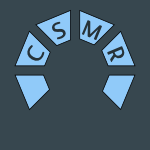 CSMR-2012-OlszakJ #composition #concept #how #legacy #question
CSMR-2012-OlszakJ #composition #concept #how #legacy #question- Modularization of Legacy Features by Relocation and Reconceptualization: How Much is Enough? (AO, BNJ), pp. 171–180.
 ICSE-2012-EderJJHVP #how #maintenance #matter #question
ICSE-2012-EderJJHVP #how #maintenance #matter #question- How much does unused code matter for maintenance? (SE, MJ, EJ, BH, RV, KHP), pp. 1102–1111.
 ISMM-2012-OCallahan #memory management #question #using #web #why
ISMM-2012-OCallahan #memory management #question #using #web #why- Why is your web browser using so much memory? (RO), pp. 1–2.
 ICALP-v1-2011-AnandGM #how #question
ICALP-v1-2011-AnandGM #how #question- Meeting Deadlines: How Much Speed Suffices? (SA, NG, NM), pp. 232–243.
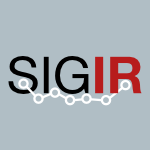 SIGIR-2011-TrotmanK #ad hoc #information retrieval
SIGIR-2011-TrotmanK #ad hoc #information retrieval- Ad hoc IR: not much room for improvement (AT, DK), pp. 1095–1096.
 PLATEAU-2011-GilGM #how #metric #question
PLATEAU-2011-GilGM #how #metric #question- How much information do software metrics contain? (JYG, MG, DM), pp. 57–64.
 DAC-2010-HarmsCDHUWY #design #experience #question #what
DAC-2010-HarmsCDHUWY #design #experience #question #what- What will make your next design experience a much better one? (TH, JAC, RD, RAH, DU, GW, JY), p. 730.
 CHI-2010-MunsonR #how
CHI-2010-MunsonR #how- Presenting diverse political opinions: how and how much (SAM, PR), pp. 1457–1466.
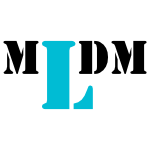 MLDM-2009-Hoppner #how #question
MLDM-2009-Hoppner #how #question- How Much True Structure Has Been Discovered? (FH), pp. 385–397.
 PPoPP-2009-KulkarniBIPC #how #parallel #question
PPoPP-2009-KulkarniBIPC #how #parallel #question- How much parallelism is there in irregular applications? (MK, MB, RI, KP, CC), pp. 3–14.
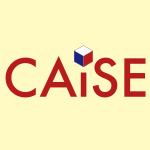 CAiSE-2008-MuehlenR #how #modelling #process
CAiSE-2008-MuehlenR #how #modelling #process- How Much Language Is Enough? Theoretical and Practical Use of the Business Process Modeling Notation (MzM, JR), pp. 465–479.
 POPL-2008-Voigtlander #parallel
POPL-2008-Voigtlander #parallel- Much ado about two (pearl): a pearl on parallel prefix computation (JV), pp. 29–35.
 DAC-2007-ZhouTLW #how #logic
DAC-2007-ZhouTLW #how #logic- How Much Can Logic Perturbation Help from Netlist to Final Routing for FPGAs (CLZ, WCT, WHL, YLW), pp. 922–927.
 ITiCSE-2006-SudolB #education #student #women
ITiCSE-2006-SudolB #education #student #women- Is there such a thing as too much support?: a discussion from a teacher and a student’s perspective of support groups for girls in computer science (LAS, KB), p. 309.
 SEKE-2006-ChiYL #how #question #web
SEKE-2006-ChiYL #how #question #web- Web Object Cacheability How Much Do We Know? (CHC, JLY, LL), pp. 252–255.
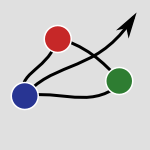 HT-2004-HarperYGS #evaluation #how #hypermedia
HT-2004-HarperYGS #evaluation #how #hypermedia- How much is too much in a hypertext link?: investigating context and preview — a formative evaluation (SH, YY, CAG, RS), pp. 116–125.
 SAC-2004-SeigneurJ #privacy #trust #ubiquitous
SAC-2004-SeigneurJ #privacy #trust #ubiquitous- Trust enhanced ubiquitous payment without too much privacy loss (JMS, CDJ), pp. 1593–1599.
 CSMR-2003-Briand #documentation #how #question
CSMR-2003-Briand #documentation #how #question- Software Documentation: How Much Is Enough? (LCB), p. 13–?.
 DAC-2002-AloulSS #how #named #question
DAC-2002-AloulSS #how #named #question- Satometer: how much have we searched? (FAA, BDS, KAS), pp. 737–742.
 DAC-1999-FranzonBFMPSW #how #question
DAC-1999-FranzonBFMPSW #how #question- Parasitic Extraction Accuracy — How Much is Enough? (PDF, MB, AF, SM, RP, RCS, MW), p. 429.
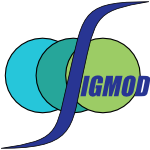 SIGMOD-1998-ChaudhuriMN #how #question #random
SIGMOD-1998-ChaudhuriMN #how #question #random- Random Sampling for Histogram Construction: How much is enough? (SC, RM, VRN), pp. 436–447.
 ITiCSE-1998-Kolikant #algebra #how #student
ITiCSE-1998-Kolikant #algebra #how #student- “How much did you get?” (poster): the influence of algebraic knowledge of computer science students (YBDK), p. 287.
 TOOLS-USA-1998-Mellor98a #behaviour #how #modelling #question
TOOLS-USA-1998-Mellor98a #behaviour #how #modelling #question- Modeling Complex Behavior Simply or How Much is Too Much? (SJM), p. 444.
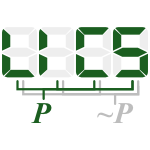 LICS-1997-DziembowskiJW #game studies #how #infinity #memory management #question
LICS-1997-DziembowskiJW #game studies #how #infinity #memory management #question- How Much Memory is Needed to Win Infinite Games? (SD, MJ, IW), pp. 99–110.
 ICSM-1996-KellerCPZ #how #maintenance #question
ICSM-1996-KellerCPZ #how #maintenance #question- How Much Has Software Maintenance Changed Since 1983? (TK, NC, TMP, NZ), p. 34–?.
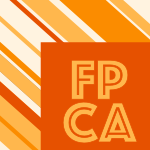 FPCA-1995-SchauserG #how #question #source code #strict
FPCA-1995-SchauserG #how #question #source code #strict- How Much Non-Strictness do Lenient Programs Require? (KES, SCG), pp. 216–225.
 SIGIR-1995-Allan #feedback
SIGIR-1995-Allan #feedback- Relevance Feedback With Too Much Data (JA), pp. 337–343.
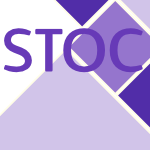 STOC-1993-BorodinRSU #hardware #how #question
STOC-1993-BorodinRSU #hardware #how #question- How much can hardware help routing? (AB, PR, BS, EU), pp. 573–582.
 HT-1989-Lesk #what
HT-1989-Lesk #what- What To Do When There’s Too Much Information (ML), pp. 305–318.
 NACLP-1989-SinghalP #how #parallel #question #unification
NACLP-1989-SinghalP #how #parallel #question #unification- Unification Parallelism: How Much Can We Exploit? (AS, YNP), pp. 1135–1147.
 SCAM-2015-FenskeSMS #detection #smell #variability
SCAM-2015-FenskeSMS #detection #smell #variability ICALP-v2-2015-Klein0 #game studies #how #infinity #lookahead #question
ICALP-v2-2015-Klein0 #game studies #how #infinity #lookahead #question CHI-2015-DeberJFW #how #latency #performance
CHI-2015-DeberJFW #how #latency #performance CHI-2015-StraitVFSU #elicitation #interactive
CHI-2015-StraitVFSU #elicitation #interactive SAC-2015-HoldererAM #bibliography #constraints #workflow
SAC-2015-HoldererAM #bibliography #constraints #workflow ICSE-v1-2015-WatermanNA #agile #architecture #how
ICSE-v1-2015-WatermanNA #agile #architecture #how ICSE-v2-2015-BellerGZ #developer #how #question
ICSE-v2-2015-BellerGZ #developer #how #question VLDB-2013-RamanABCKKLLLLMMPSSSSZ
VLDB-2013-RamanABCKKLLLLMMPSSSSZ CSMR-2012-OlszakJ #composition #concept #how #legacy #question
CSMR-2012-OlszakJ #composition #concept #how #legacy #question ICSE-2012-EderJJHVP #how #maintenance #matter #question
ICSE-2012-EderJJHVP #how #maintenance #matter #question ISMM-2012-OCallahan #memory management #question #using #web #why
ISMM-2012-OCallahan #memory management #question #using #web #why ICALP-v1-2011-AnandGM #how #question
ICALP-v1-2011-AnandGM #how #question SIGIR-2011-TrotmanK #ad hoc #information retrieval
SIGIR-2011-TrotmanK #ad hoc #information retrieval PLATEAU-2011-GilGM #how #metric #question
PLATEAU-2011-GilGM #how #metric #question DAC-2010-HarmsCDHUWY #design #experience #question #what
DAC-2010-HarmsCDHUWY #design #experience #question #what CHI-2010-MunsonR #how
CHI-2010-MunsonR #how MLDM-2009-Hoppner #how #question
MLDM-2009-Hoppner #how #question PPoPP-2009-KulkarniBIPC #how #parallel #question
PPoPP-2009-KulkarniBIPC #how #parallel #question CAiSE-2008-MuehlenR #how #modelling #process
CAiSE-2008-MuehlenR #how #modelling #process POPL-2008-Voigtlander #parallel
POPL-2008-Voigtlander #parallel DAC-2007-ZhouTLW #how #logic
DAC-2007-ZhouTLW #how #logic ITiCSE-2006-SudolB #education #student #women
ITiCSE-2006-SudolB #education #student #women SEKE-2006-ChiYL #how #question #web
SEKE-2006-ChiYL #how #question #web HT-2004-HarperYGS #evaluation #how #hypermedia
HT-2004-HarperYGS #evaluation #how #hypermedia SAC-2004-SeigneurJ #privacy #trust #ubiquitous
SAC-2004-SeigneurJ #privacy #trust #ubiquitous CSMR-2003-Briand #documentation #how #question
CSMR-2003-Briand #documentation #how #question DAC-2002-AloulSS #how #named #question
DAC-2002-AloulSS #how #named #question DAC-1999-FranzonBFMPSW #how #question
DAC-1999-FranzonBFMPSW #how #question SIGMOD-1998-ChaudhuriMN #how #question #random
SIGMOD-1998-ChaudhuriMN #how #question #random ITiCSE-1998-Kolikant #algebra #how #student
ITiCSE-1998-Kolikant #algebra #how #student TOOLS-USA-1998-Mellor98a #behaviour #how #modelling #question
TOOLS-USA-1998-Mellor98a #behaviour #how #modelling #question LICS-1997-DziembowskiJW #game studies #how #infinity #memory management #question
LICS-1997-DziembowskiJW #game studies #how #infinity #memory management #question ICSM-1996-KellerCPZ #how #maintenance #question
ICSM-1996-KellerCPZ #how #maintenance #question FPCA-1995-SchauserG #how #question #source code #strict
FPCA-1995-SchauserG #how #question #source code #strict SIGIR-1995-Allan #feedback
SIGIR-1995-Allan #feedback STOC-1993-BorodinRSU #hardware #how #question
STOC-1993-BorodinRSU #hardware #how #question HT-1989-Lesk #what
HT-1989-Lesk #what NACLP-1989-SinghalP #how #parallel #question #unification
NACLP-1989-SinghalP #how #parallel #question #unification